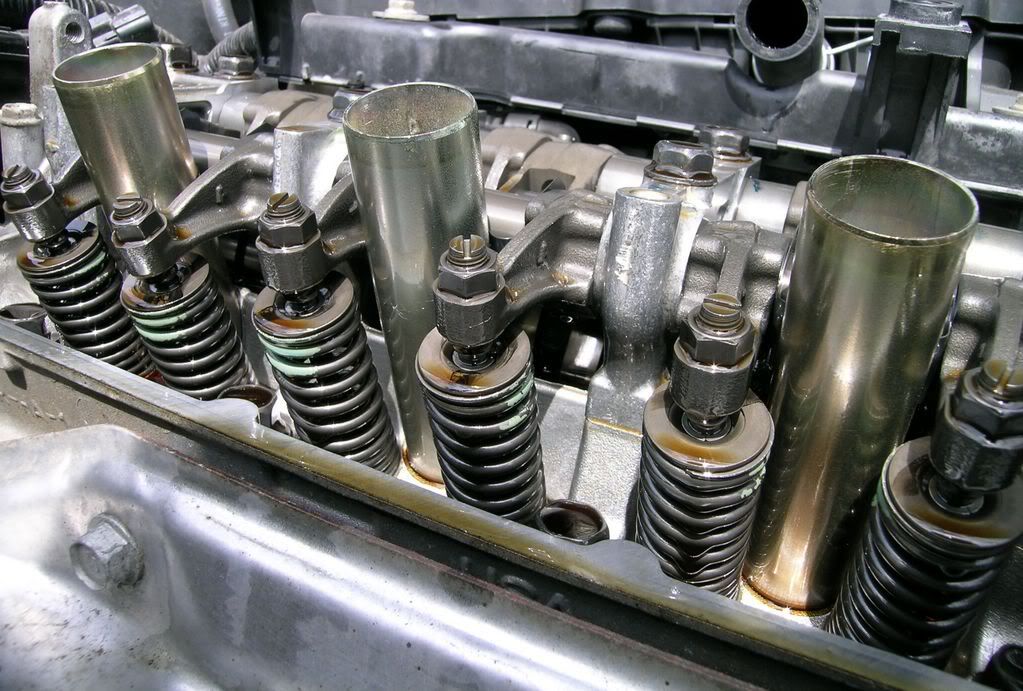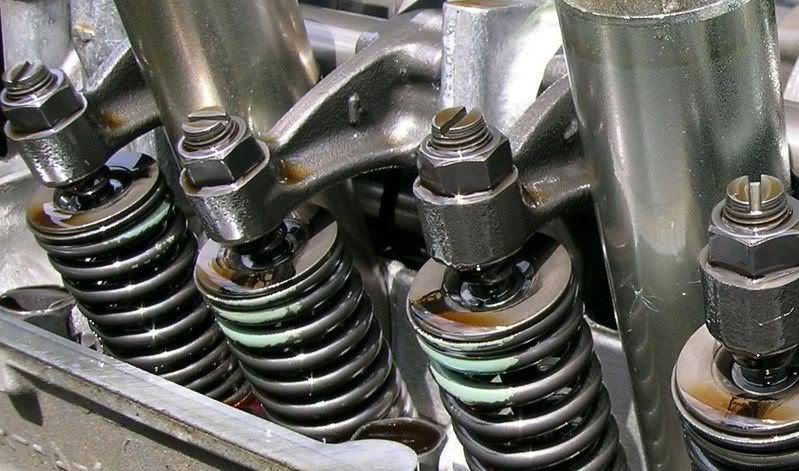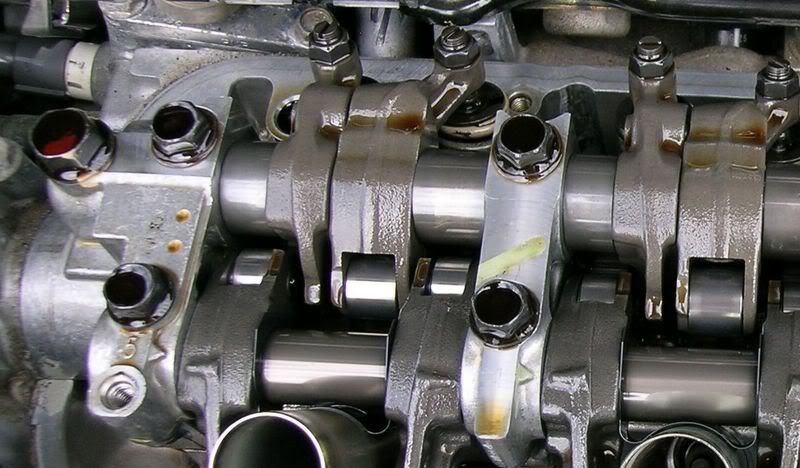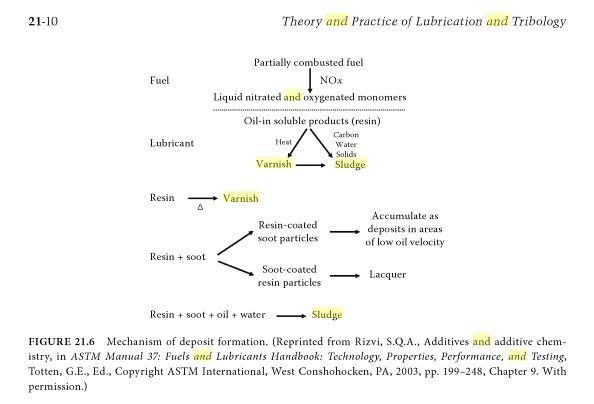You are using an out of date browser. It may not display this or other websites correctly.
You should upgrade or use an alternative browser.
You should upgrade or use an alternative browser.
under valve cover pics 163,000 elantra
- Thread starter ram_man
- Start date
- Status
- Not open for further replies.
I very much doubt synthetic oil was used in OP's engine.
I had posted shots a while back thru the fill hole of my 00 Century using dino oil at 3,000 mile OCI's, since day one. They weren't much better than the OP's pictures either at well under 100K miles on the clock. I was given this car and know the oil change and mechanical history of the car [no engine issues whatsoever to contribute to the mess I saw]. Needless to say no more Dino oil for me for in that engine.


- Joined
- Dec 30, 2006
- Messages
- 29,558
Originally Posted By: gregk24
Originally Posted By: Merkava_4



Is this your engine Merkava?
^^2nd. Is this yours Merkava? Looks brand new!!

Originally Posted By: Merkava_4



Is this your engine Merkava?
^^2nd. Is this yours Merkava? Looks brand new!!

Originally Posted By: gregk24
Is this your engine Merkava?
That engine belongs to member sxg6. I believe it's a Honda of some kind and the oil used was Mobil 1.
Is this your engine Merkava?
That engine belongs to member sxg6. I believe it's a Honda of some kind and the oil used was Mobil 1.
Originally Posted By: OVERKILL
Originally Posted By: salv
Varnish is no big deal. It is sludge free, the cams look good with no scuffing or scoring. I'd say it looks good, and there is no reason for concern.
Yeah, we are going to have to agree to disagree on that one. Varnish is the precursor to sludge. This amount of varnish is indicative of the oil not doing its job and letting deposits form/fall out of suspension. Not a desirable trait, even if at this point no harm has been done. I can only imagine what the ring-pack area looks like

We'll have to agree to disagree as well.
If varnish is the precursor to sludge (it isn't) then this 163K mile engine should already have sludge in the upper cylinder head.
It doesn't.
Now, I've had engines that looked better on 3K drains using the oils available in the 'seventies and 'eighties.
3.5K drains on current oils should leave the upper cylinder head looking nice and clean, especially since this car gets regular highway use.
This engine does look pretty well varnished even if there is no sludge.
I would speculate that this engine may have been given a few wall jobs by the dealer.
A wall job is where the unsuspecting owner brings their car in for a service it doesn't really need and the car is parked on the wall next to the service shop and left there.
The owner returns, pays for the undone service work and drives off in what she thinks is her freshly serviced car.
At least a Walmart TLE gives you windows through which you can actually watch the techs change the oil.
Originally Posted By: salv
Varnish is no big deal. It is sludge free, the cams look good with no scuffing or scoring. I'd say it looks good, and there is no reason for concern.
Yeah, we are going to have to agree to disagree on that one. Varnish is the precursor to sludge. This amount of varnish is indicative of the oil not doing its job and letting deposits form/fall out of suspension. Not a desirable trait, even if at this point no harm has been done. I can only imagine what the ring-pack area looks like

We'll have to agree to disagree as well.
If varnish is the precursor to sludge (it isn't) then this 163K mile engine should already have sludge in the upper cylinder head.
It doesn't.
Now, I've had engines that looked better on 3K drains using the oils available in the 'seventies and 'eighties.
3.5K drains on current oils should leave the upper cylinder head looking nice and clean, especially since this car gets regular highway use.
This engine does look pretty well varnished even if there is no sludge.
I would speculate that this engine may have been given a few wall jobs by the dealer.
A wall job is where the unsuspecting owner brings their car in for a service it doesn't really need and the car is parked on the wall next to the service shop and left there.
The owner returns, pays for the undone service work and drives off in what she thinks is her freshly serviced car.
At least a Walmart TLE gives you windows through which you can actually watch the techs change the oil.
OVERKILL
$100 Site Donor 2021
Originally Posted By: fdcg27
We'll have to agree to disagree as well.
If varnish is the precursor to sludge (it isn't) then this 163K mile engine should already have sludge in the upper cylinder head.
It doesn't.
Sludge doesn't form without varnish
 That is to say that while varnish doesn't always necessarily lead to sludge, sludge always has varnish happen before it.
That is to say that while varnish doesn't always necessarily lead to sludge, sludge always has varnish happen before it.
Also, depending on engine design it may have some sludge in the pan area. Different engines "go to [censored] in a hand basket" in different ways
 A prime example, a Ford Windsor will show some moderate varnish on the heads but the lifter valley can be chock full of sludge. I've seen a 3.8L GM with nothing in the heads but some varnish and about an inch of the "good stuff" in the bottom of the pan
A prime example, a Ford Windsor will show some moderate varnish on the heads but the lifter valley can be chock full of sludge. I've seen a 3.8L GM with nothing in the heads but some varnish and about an inch of the "good stuff" in the bottom of the pan

Thought this PDF explained it well (they are a member of the STLE BTW):
http://www.focuslab.co.th/pdf/vspi_en.pdf
Quote:
What is varnish?
- Varnish is a soft contaminant composed of
lubricant degradation by-products that are less
than 1 micron in size and is not measured by
traditional particle count.
- Varnish deposit is a thin-orange, brown or
black insoluble film deposit occurring on
internal of lubricant systems .
- Varnish is a high molecular weight substance
that is unstable in oil.
- Varnish deposit is unable to remove by
mechanical filtration
Quote:
What is sludge?
- Sludge is varnish which have higher water
content
- Sludge looks like a soft mud-like deposit that
settles out of the oil
- Sludge is also a soft contaminant .
- Sludge contaminant , if prolonged elevated
temperatures will evaporate the moisture from
the sludge contaminant.
Essentially sludge IS varnish. Varnish that has managed to get that much worse. And that product, as noted in the last section of the 2nd excerpt can dry up and give us that lovely baked on sludge that you can chip off with a screwdriver, LOL!!!!
We'll have to agree to disagree as well.
If varnish is the precursor to sludge (it isn't) then this 163K mile engine should already have sludge in the upper cylinder head.
It doesn't.
Sludge doesn't form without varnish

Also, depending on engine design it may have some sludge in the pan area. Different engines "go to [censored] in a hand basket" in different ways


Thought this PDF explained it well (they are a member of the STLE BTW):
http://www.focuslab.co.th/pdf/vspi_en.pdf
Quote:
What is varnish?
- Varnish is a soft contaminant composed of
lubricant degradation by-products that are less
than 1 micron in size and is not measured by
traditional particle count.
- Varnish deposit is a thin-orange, brown or
black insoluble film deposit occurring on
internal of lubricant systems .
- Varnish is a high molecular weight substance
that is unstable in oil.
- Varnish deposit is unable to remove by
mechanical filtration
Quote:
What is sludge?
- Sludge is varnish which have higher water
content
- Sludge looks like a soft mud-like deposit that
settles out of the oil
- Sludge is also a soft contaminant .
- Sludge contaminant , if prolonged elevated
temperatures will evaporate the moisture from
the sludge contaminant.
Essentially sludge IS varnish. Varnish that has managed to get that much worse. And that product, as noted in the last section of the 2nd excerpt can dry up and give us that lovely baked on sludge that you can chip off with a screwdriver, LOL!!!!
Maybe and maybe not.
Most engines have some varnish after 100K or so of typical maintenance.
Most engines don't have sludge nor will they ever develop it.
Sludge and varnish are two very different things.
Sludge is not simply varnish with a higher water content, since there won't be any water content in anything in an engine that's run regularly to normal operating temperature.
If sludge were merely varnish combined with water, sludge would be very rare.
It's common in some engine families while unknown in others without regard to operating conditions.
Most engines have some varnish after 100K or so of typical maintenance.
Most engines don't have sludge nor will they ever develop it.
Sludge and varnish are two very different things.
Sludge is not simply varnish with a higher water content, since there won't be any water content in anything in an engine that's run regularly to normal operating temperature.
If sludge were merely varnish combined with water, sludge would be very rare.
It's common in some engine families while unknown in others without regard to operating conditions.
OVERKILL
$100 Site Donor 2021
Originally Posted By: fdcg27
Maybe and maybe not.
Most engines have some varnish after 100K or so of typical maintenance.
Exactly, that's why I said varnish doesn't necessarily always lead to sludge. But if you have sludge, you've already had varnish.
Quote:
Most engines don't have sludge nor will they ever develop it.
Most engines that we'll see the inside of on this site perhaps. I've seen quite a few engines with sludge that operated in the real world by people who weren't faithful with maintenance. There are a surprising number of those engines and people out there. But essentially you are right in that as long as the oil is changed at least somewhat regularly sludge won't develop in most engines. I'll get to why later.
Quote:
Sludge and varnish are two very different things.
Certainly. Varnish is fall-out, whilst sludge, made of essentially the same ingredients, is an evolution of that fall out, mixed with emulsification that builds up as a "goop". But of course we know this goop can become a baked on crud, also called sludge. I'm sure many of us have seen both, as well as the in-between stuff.
Quote:
Sludge is not simply varnish with a higher water content, since there won't be any water content in anything in an engine that's run regularly to normal operating temperature.
If sludge were merely varnish combined with water, sludge would be very rare.
It's common in some engine families while unknown in others without regard to operating conditions.
That's where we are going to disagree and here's why:
We both know varnish is broken down oil, combustion products, broken down polymers....etc that the oil, no longer able to keep in suspension, allows to fall out and build up on surfaces.
Now, that same oil, during a warm-up, will mix with humidity/water inside the crankcase and cause these emulsified deposits. Unlike an engine that is short tripped and adds significant water to the oil, this engine will build up thin layers of this crud that quickly hardens as the engine operates at temp. This will create the hard, baked on sludge that we sometimes see in poorly maintained cars.
In a short-tripper, where the engine isn't up to temp frequently, you'll get more of the water-mixed product, which creates the sludgy goop that looks like axle grease under the valve cover.
If we think of what the GM intake gasket leakers create for sludge in short order, that's essentially a super sped up version of the process due to the greater than normal ingestion of water.
For sludge to occur however, negligence must be to the point where this product is allowed to be created in volume and build-up. If you have an engine where the oil just isn't changed frequently enough, there will be enough degradation to cause varnish but the oil isn't in the crankcase long enough in its broken down state to allow for any appreciable sludge to build-up and any that does develop is quickly taken care of by the additive package of the new oil when it is changed. While fresh oil won't wash off any appreciable amount of varnish, since sludge is soft in the beginning, it will remove that.
Where we see the variances in different engines I think stems from the fact that there are significant differences in oil drain back, operating temperature of various parts of the engine.....etc.
For example, think about on an old pushrod engine where sludge develops. In the valve cover. Why? Because that's the coolest spot in the engine and where there is going to be condensation to mix with the degraded oil to create sludge. In engines with generous aluminum oil pans that see a lot of air, you'll see sludge develop in the pan. I've seen this on a supercharged GM 3.8L, as the blower meant the top section of the engine, even the valve cover area, was HOT, whilst the large baffled pan was a big 'ol chunk of aluminum that was exposed to airflow under the car and was significantly cooler than anywhere else.
Maybe and maybe not.
Most engines have some varnish after 100K or so of typical maintenance.
Exactly, that's why I said varnish doesn't necessarily always lead to sludge. But if you have sludge, you've already had varnish.
Quote:
Most engines don't have sludge nor will they ever develop it.
Most engines that we'll see the inside of on this site perhaps. I've seen quite a few engines with sludge that operated in the real world by people who weren't faithful with maintenance. There are a surprising number of those engines and people out there. But essentially you are right in that as long as the oil is changed at least somewhat regularly sludge won't develop in most engines. I'll get to why later.
Quote:
Sludge and varnish are two very different things.
Certainly. Varnish is fall-out, whilst sludge, made of essentially the same ingredients, is an evolution of that fall out, mixed with emulsification that builds up as a "goop". But of course we know this goop can become a baked on crud, also called sludge. I'm sure many of us have seen both, as well as the in-between stuff.
Quote:
Sludge is not simply varnish with a higher water content, since there won't be any water content in anything in an engine that's run regularly to normal operating temperature.
If sludge were merely varnish combined with water, sludge would be very rare.
It's common in some engine families while unknown in others without regard to operating conditions.
That's where we are going to disagree and here's why:
We both know varnish is broken down oil, combustion products, broken down polymers....etc that the oil, no longer able to keep in suspension, allows to fall out and build up on surfaces.
Now, that same oil, during a warm-up, will mix with humidity/water inside the crankcase and cause these emulsified deposits. Unlike an engine that is short tripped and adds significant water to the oil, this engine will build up thin layers of this crud that quickly hardens as the engine operates at temp. This will create the hard, baked on sludge that we sometimes see in poorly maintained cars.
In a short-tripper, where the engine isn't up to temp frequently, you'll get more of the water-mixed product, which creates the sludgy goop that looks like axle grease under the valve cover.
If we think of what the GM intake gasket leakers create for sludge in short order, that's essentially a super sped up version of the process due to the greater than normal ingestion of water.
For sludge to occur however, negligence must be to the point where this product is allowed to be created in volume and build-up. If you have an engine where the oil just isn't changed frequently enough, there will be enough degradation to cause varnish but the oil isn't in the crankcase long enough in its broken down state to allow for any appreciable sludge to build-up and any that does develop is quickly taken care of by the additive package of the new oil when it is changed. While fresh oil won't wash off any appreciable amount of varnish, since sludge is soft in the beginning, it will remove that.
Where we see the variances in different engines I think stems from the fact that there are significant differences in oil drain back, operating temperature of various parts of the engine.....etc.
For example, think about on an old pushrod engine where sludge develops. In the valve cover. Why? Because that's the coolest spot in the engine and where there is going to be condensation to mix with the degraded oil to create sludge. In engines with generous aluminum oil pans that see a lot of air, you'll see sludge develop in the pan. I've seen this on a supercharged GM 3.8L, as the blower meant the top section of the engine, even the valve cover area, was HOT, whilst the large baffled pan was a big 'ol chunk of aluminum that was exposed to airflow under the car and was significantly cooler than anywhere else.
OVERKILL
$100 Site Donor 2021
Just to add this:
http://books.google.ca/books?id=BZDbK5UY...ish&f=false
Quote:
Handbook of Lubrication and Tribology: Theory and Design, Second ..., Volume 2
Read section 21.3 and note this diagram:

Shows varnish + carbon, water and solids is sludge

http://books.google.ca/books?id=BZDbK5UY...ish&f=false
Quote:
Handbook of Lubrication and Tribology: Theory and Design, Second ..., Volume 2
Read section 21.3 and note this diagram:

Shows varnish + carbon, water and solids is sludge

This is why I use full synthetic even in engines not built for high performance.
If the engine looks like this, and is naturally aspirated, I am afraid to see what the Hyundai GDI Turbo engine is going to look like in the future.
If the engine looks like this, and is naturally aspirated, I am afraid to see what the Hyundai GDI Turbo engine is going to look like in the future.
Chalk it up to old Hyundai engineering.
wemay
Site Donor 2023
My EVO8 had 245,000 miles when sold. Almost exclusively on dino, not one issue ever. 3-3500K mile oci.
I think Hyundai owners will be fine as long as they stick to their maintenance. There will always be exceptions though, to be sure.
I think Hyundai owners will be fine as long as they stick to their maintenance. There will always be exceptions though, to be sure.
Last edited:
wemay
Site Donor 2023
...when not using dino, Royal Purple was used in the Evo.
Looks fine to me for an old car. I bet that engine will run the life of the vehicle.
Besides no one even knows if the oil caused this. Could be a number of things like, oh poor crankcase ventilation, or the dealer lying and not changing it!
But the solution is always to use more expensive oil!
Let see how expensive that suggestion is!
163000/3500= 46 lets round up to 47 oil changes. @ $20 each for Quarker state with a filter that's $940.
47 x oh what do the good oil change specials go for, $35? If you go boutique add on another $10 a change. $1645
How much does a junk yard engine cost for that car? Even if that engine implodes tomorrow they are about even, and that motor is a looong way from implosion.
Besides no one even knows if the oil caused this. Could be a number of things like, oh poor crankcase ventilation, or the dealer lying and not changing it!
But the solution is always to use more expensive oil!
Let see how expensive that suggestion is!
163000/3500= 46 lets round up to 47 oil changes. @ $20 each for Quarker state with a filter that's $940.
47 x oh what do the good oil change specials go for, $35? If you go boutique add on another $10 a change. $1645
How much does a junk yard engine cost for that car? Even if that engine implodes tomorrow they are about even, and that motor is a looong way from implosion.
Last edited:
I'd run some Mobil-1 or Ultra & clean that thing up!
So says the guy who suggests Supertech HD30 for a Lamborghini...just sayin.
Originally Posted By: gman2304
Looks to me like Castrol was used....just sayin.
Originally Posted By: gman2304
Looks to me like Castrol was used....just sayin.
^^Burn!^^


- Status
- Not open for further replies.
Similar threads
- Replies
- 43
- Views
- 5K
- Replies
- 60
- Views
- 5K
- Replies
- 31
- Views
- 3K
- Replies
- 13
- Views
- 2K
- Replies
- 28
- Views
- 2K

